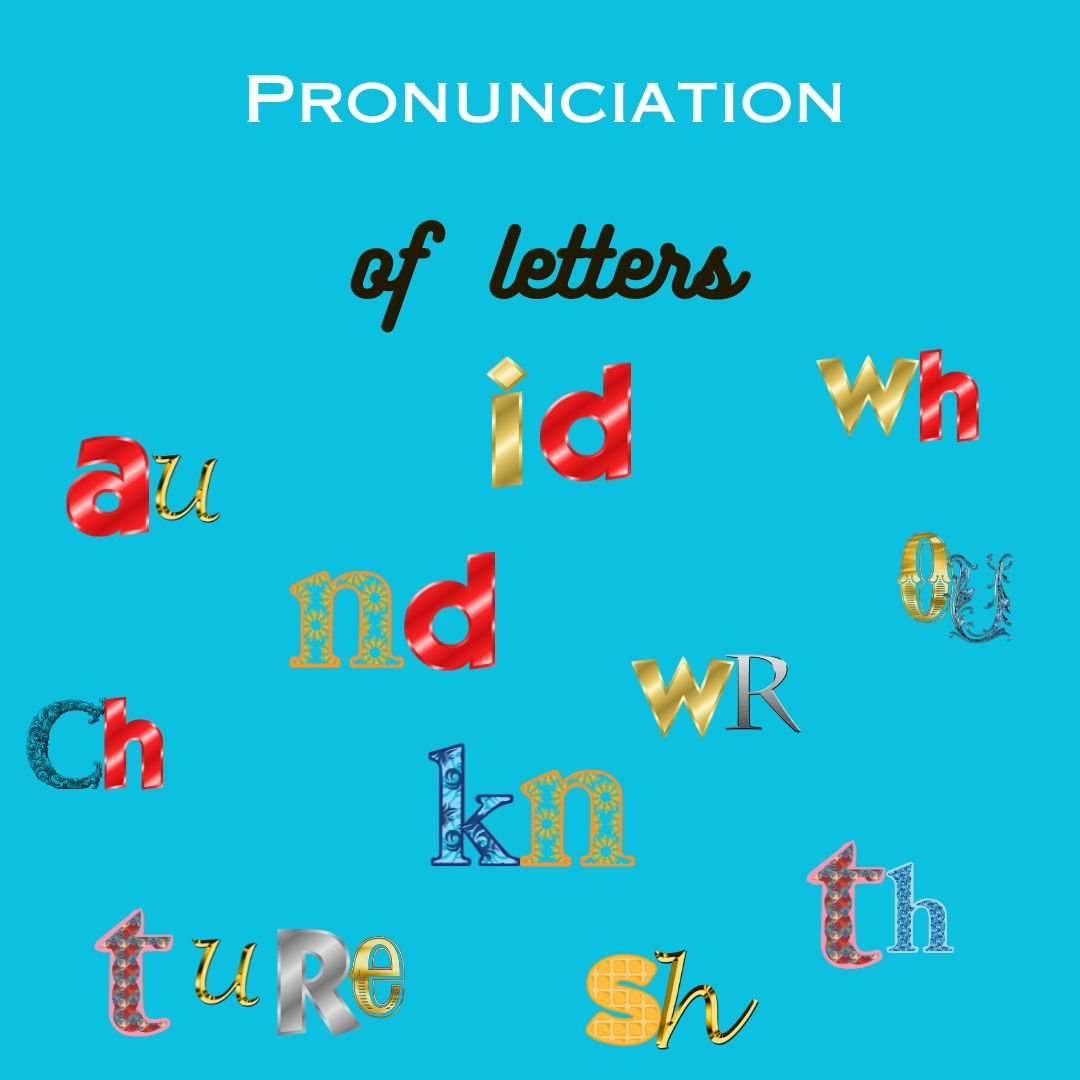Pronunciation of letter groups (letter combinations)- au, ou, ld, nd, kn, ture, gh, ch, sh, th, wh, wr in English

Pronunciation of letter groups:
Digraphs au and ou before ght:
When the digraphs au or ou appear before ght in English words, they are often pronounced as a long vowel sound similar to [ɔː].
Examples:
daughter: [ˈdɔːtə(r)]
caught: [kɔːt]
thought: [θɔːt]
The i before ld and nd:
When the letter i appears before the consonant combinations ld and nd, it is often pronounced as a short vowel sound similar to [aɪ].
Examples:
child: [ʧaɪld]
mild: [maɪld]
kind: [kaɪnd]
find: [faɪnd]
The combination kn:
In many English words, the combination kn at the beginning of a word is often silent, and the word is pronounced as if the k were not present.
Examples:
know: [nəʊ]
knife: [naɪf]
knock: [nɑk]
knight: [naɪt]
The combination ture:
In many English words, the combination ture is pronounced as [tʃə (r)]. This combination represents a sound change where the t sound is followed by the ch sound.
Examples:
picture: [ˈpɪktʃə(r)]
adventure: [ədˈvɛntʃə(r)]
future: [‘fju: tʃə(r)]
The letter I before gh
Before gh the letter I sounds the same way as in the alphabet, like [ai].
Examples:
high: [haɪ]
sigh: [saɪ]
night: [naɪt]
Gh in other positions:
In many English words, the combination gh is not pronounced in the middle or at the end of words. The words are pronounced as if the gh were absent.
Examples:
eight: [eɪt]
sigh: [saɪ]
ghost: [ɡəʊst]
The combination ch:
The combination ch is pronounced as a voiceless postalveolar affricate sound [tʃ], which involves an initial stop sound followed by a fricative sound.
Examples:
chin: [tʃɪn]
church: [tʃɜːrtʃ]
cheese: [tʃiːz]
The combination sh:
The combination sh is pronounced as a voiceless postalveolar fricative sound [ʃ], which is a hissing sound produced by placing the front of the tongue near the alveolar ridge without fully stopping the airflow.
Examples:
she: [ʃi]
shell: [ʃɛl]
shoe: [ʃuː]
ship: [ʃɪp]
Voiceless fricative sound th:
When the combination th appears at the beginning or in the middle of words (particularly significant words), it is often pronounced as a voiceless interdental fricative sound like [θ].
Examples:
thin: [θɪn]
Smith: [ smɪθ]
Voiced fricative sound th:
In function words (like articles, pronouns, and certain common words) and at the end of significant words between vowels, the combination th is often pronounced as a voiced interdental fricative sound [ð].
Examples:
the: [ðə]
this: [ðɪs]
that: [ðæt]
they: [ðeɪ]
bathe: [beɪð]
Voiced affricative sound j:
The letter j is pronounced as a voiced palato-alveolar affricate sound [dʒ], similar to the j sound in judge.
Examples:
just: [dʒʌst]
jet: [dʒɛt]
jump: [dʒʌmp]
g before e, i, y:
When the letter g is followed by the letters e, i, or y, it often produces a sound [dʒ], similar to the g sound in giant
Examples:
page: [peɪdʒ]
gin: [dʒɪn]
gymnast: [ˈdʒɪm.næst]
g in other cases:
In most other cases, when the letter g is not followed by e, i, or y, it produces the typical hard g sound, similar to the g sound in go.
Examples:
good: [ɡʊd]
gray: [ɡreɪ]
.
The letter w in wh:
In the combination wh, the letter w is pronounced as a voiceless labio-velar approximant sound, while the letter h is silent.
Examples:
white: [waɪt]
whale: [weɪl]
whisper: [‘wɪspə(r)]
wheel: [wi:l]
The letter w in wr:
In the combination wr, the letter w is not pronounced. Instead, the sound is made directly with the following letter:.
Examples:
write: [raɪt]
wrist: [rɪst]
wrench: [rɛnʧ]
wrong: [rɔŋ]
The letters a and o after w, qu:
The letters a and o after w, qu are pronounced not according to the rule, but like in the examples given below.
Examples:
word: [wɜ:d]
work: [wɜ:k]
want: [wɑnt]
was: [wɑz]
watch: [wɑʧ]
quantity: [‘kwɑntəti/
quart: [kwɔ:t]
Pronunciation of letters- u, o, a, e, x, l,y and letter groups- ow, ng, er, or, rr in English
Pronunciation of the letter “a” before consonants
Vowel and Consonant Sounds in Syllable